How to Make a Subway Map with John Tauranac
Hear from an author and map designer who has been creating maps of the NYC subway, officially and unofficially, for over forty years!


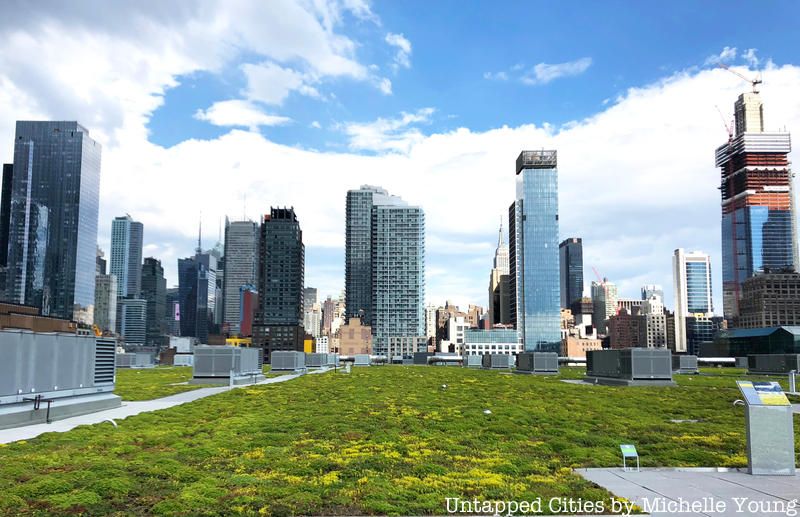
In June, Untapped Cities Insiders were treated to a free tour behind the scenes atop the Javits K. Center‘s 6.75 acre green roof – the 2nd largest in the United States – with an additional access inside the building’s underbelly to the command center, the building control center and more. Last year, 2.5 million people are estimated to have visited the Javits Center, with most getting to know the space through the large conventions hosted there, like Comic-Con, the New York International Car Show and the Fancy Food Show. However, the efficacy of the Javits Center’s operation and its commitment to sustainability and modernization is what sets the convention center apart, and keeps things running smoothly.
We’ll be hosting another free tour of the Javits Center again in September, sign up to be an Untapped Cities Insider to join in! Read on to discover some of the fun secrets you’ll learn on this behind the senes tour.
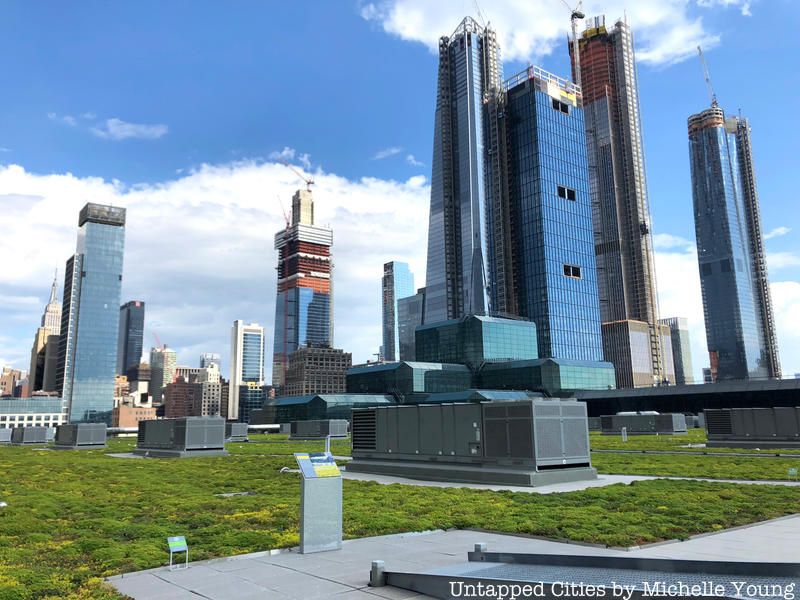
The Javits Center Green Roof covers 6.75 acres and is the second largest of its kind in the United States. It was built as part of a five-year renovation that was completed in 2014. The roof is comprised of eleven different species of sedum, a type of plant that absorbs a lot of water, and has become a thriving habitat for wildlife
Since 2014, 26 bird species have been identified on the roof along with five bat species, including an eastern red bat that was just found in June. This year, the green roof was also host to an owl as well as a rare bird called Chuck Will’s Widow, a species that actually eats bats. On our visit, we leanred that there were 96 seagull nests that the staff had counted and many baby birds were exploring the roof with their parents. The birds use the roof for nesting, foraging, as a stop for migration. There are also may species of arthropods (bugs), along with hundreds of thousands of bees (which we will talk about later).

The roof absorbs up to 7 million gallons of water a year, which diverts that flow away from the combined sewer system or in water treatment facilities. The green roof has also reduced the surface temperature of the roof by 31%, compared to the temperature before the green roof was installed.
In partnership with the Audubon Society, Drexel University and Cooper Union, the Javits Center staff is constantly testing, experimenting and collecting data about the wildlife and environmental impact the roof has. On our visit, during a series of 90+ degree weather days, they were wetting the seedum to see what a little bit of water will do on the efficiency of the air conditioning system. Recorders bat vocalizations, which help determine the different species that populate the roof.
Fun fact: the green roof only needs to be watered twice a year, in July and August, for an hour and half at a time at night.

The Javits Center used to be known as the “Darth Vader of the Hudson River,” jokes Rick Brown, Chief Engineer at the Javits Center, when the building was the number one killer of birds in New York City. The five year renovation included an entire replacement of the glass of the building. 6,000 fritted, bird-friendly planes of glass were installed, which are less reflected and tinted in blue so the birds will see the building. The glass replacement reduced bird kills at the Javits Center by 90% and for its efforts, the convention center received an award from the Audubon Society.
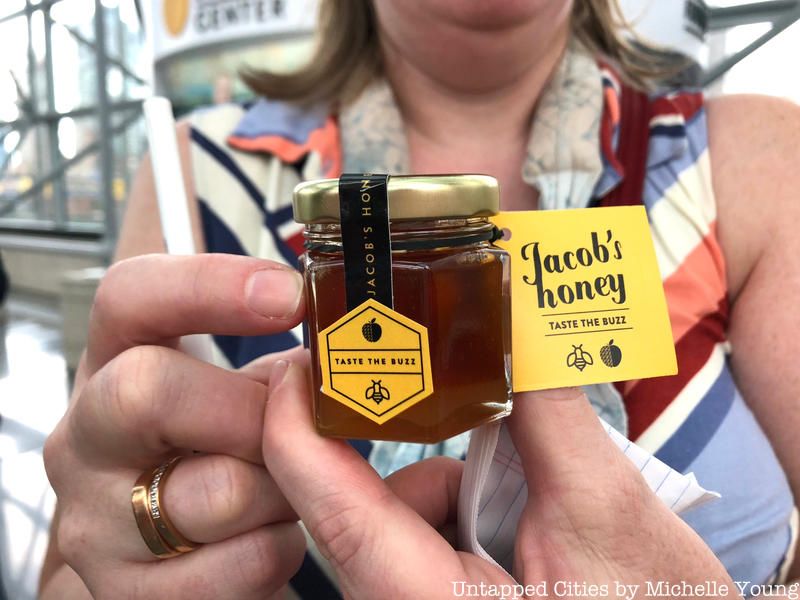
It’s not something you can buy yet, but Jacob’s Honey is the honey made from the hundreds of thousands of bees on the Javits Center green roof. There are a total of eight beehives on the roof, with three established last year and two added this year because the bees are flourishing. Three of the hives split, with the new colonies created by the bees themselves.
The Javits Center harvested 250 ounces of honey in the fall of 2017, which was not enough to distribute it widely, but this fall they expect to double or triple that amount. One way to get your hands on a jar of Jacob’s Honey, which has a tag line of “Taste the Buzz” is to come on one of our free tours (next one is on September 30th).
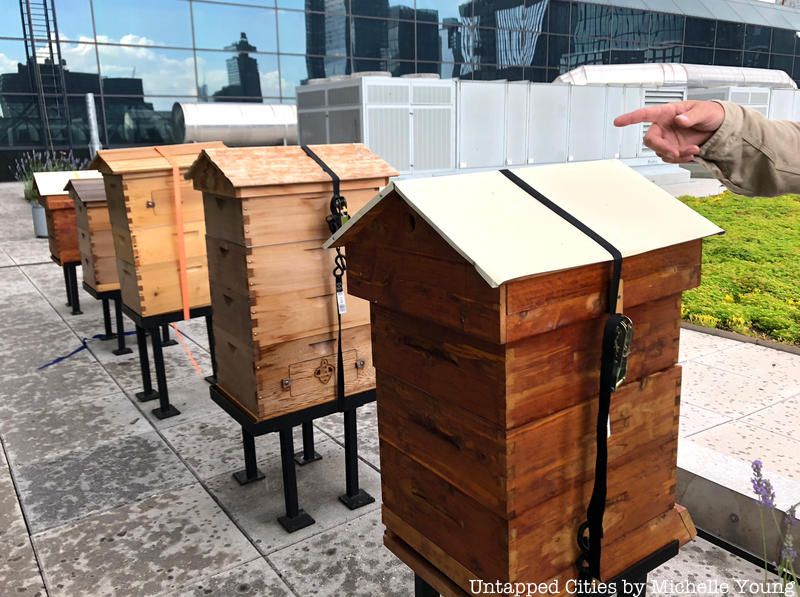
There is one synthetic hive, where the bees don’t have to make the combs. This enables the staff to break the comb and let the honey pour out, and then the comb can be reset so the bees don’t have to work as hard to produce the fifty pounds of honey needed to survive the winter. The staff leaves them the fifty pounds and feed the bees with sugar water.
Bees can travel up to five miles so you might find these same bees over on the High Line and even in New Jersey. “It’s really important that our bees are cross-pollinating all over the city,” says Rick, “making [the plants] nice and healthy.”
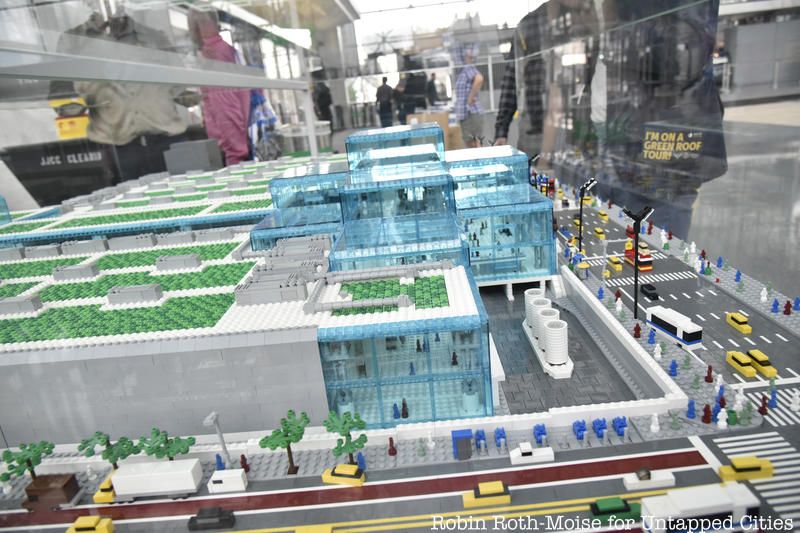
“When you have all this food and you put it in the dumpsters, what do you have? Rats, mice, rodents, possums,” says Rick. The Javits Center works with New York City’s Feral Cat Initiative to take in feral cats that are used to living in high traffic areas. After a short period of time in an enclosure to let the cats know that food and shelter are available in their new Javits Center home, the cats are released to the loading dock. “They pretty much wiped out the rodent population,” says Rick. The Javits Center feeds the cats, takes them for visits to the vet. “Also we accumulate more cats,” Rick tells us, “People drop them off or they just wander in, and they get this great Javits care.” One cat was “employed” at the Javits Center for fourteen years, and now lives in the apartment of one of Rick’s employees following his “retirement.”
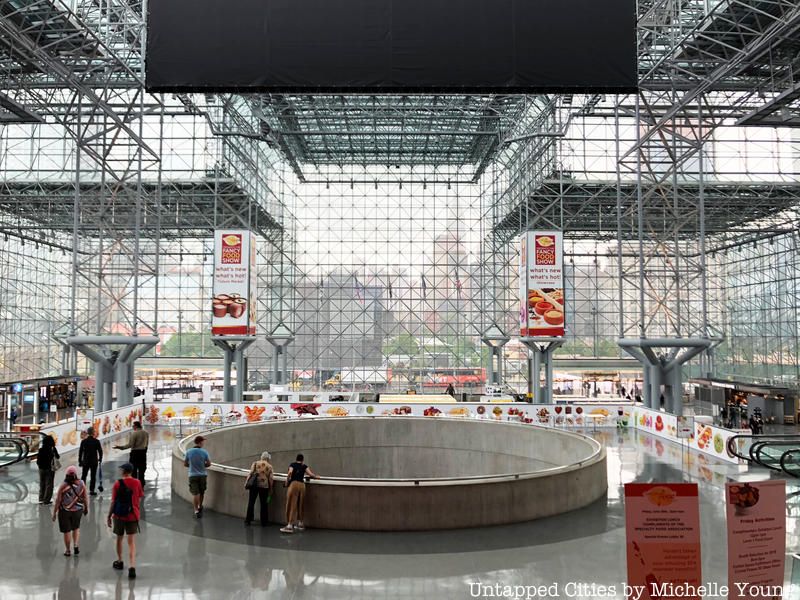
The Javits Center is run by the New York Convention Center Operation Corporation, an entity created purely for the operation of the center. “We exist for one reason and that is to generate economic activity for the state,” says Ken Dixon, Vice President of Security and Safety Solutions at the Jacob J. Javits Center. As an economic arm of New York State, the Javits Center security is staffed predominantly by New York State public safety officers who will greet you at the entrances.
The Javits Center generates $2 billion of economic activity every year, from job creation, new business and employment opportunities, redevelopment in the local community, to the stimulation of spending in the local and regional economy.
39,000 companies exhibit here each year across 175 events, with over 2.5 million visitors per year. 1 million of those visitors come through the New York International Auto Show, the biggest event of the year at the Javits Center. There are 760,000 square feet of exhibition space and 102 meeting rooms. In total, the Javits Center supports over 17,000 jobs a year and the e
vents at the Javits Center spur the booking of almost 500,000 hotel room night bookings. The Javits Center itself employs up to 5,000 people for events at a time.
In terms of square footage, the Javits Center doesn’t crack the top ten, smaller than those in Orlando, Chicago, and New Orleans, Las Vegas, and some other cities. In fact, there are four separate convention centers in Las Vegas, each of which are larger than the Javits Center. However, the Javits Center is the busiest in the United States. “We’re certainly the busiest in the country,” Ken Dixon, Vice President of Security and Safety Solutions of the Javits Center, “No one else comes close in terms of occupancy, economic impact, whatever the metric or KPI, we top the list every single year.”
Behind the scenes, there’s an immense amount of shop space, IT space, storage, kitchens, and more that collectively make the Javits Center tick.
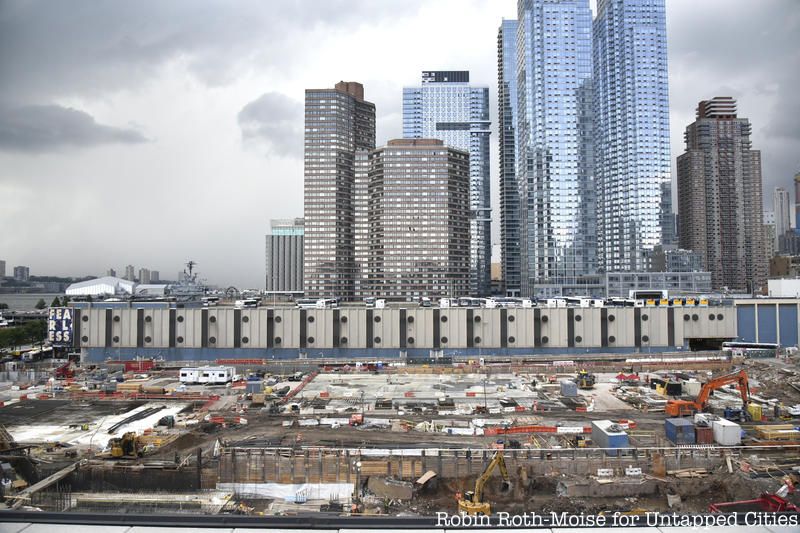 Construction is on-going for the Javits Center expansion
Construction is on-going for the Javits Center expansion
Under construction now is a 1.2 million square foot expansion of the Javits Center between 38th and 40th street, to a tune of $1.5 billion. It will have a farm, run in partnership with Brooklyn Grange, to enable farm to table operations (technically farm upstairs to kitchen downstairs, says Rick). There will be an outdoor pavilion on the fifth level and a power plant. A new ballroom, the largest in the northeast, will overlook the roof and
enable the Javits Center to offer foundation dinners, a new revenue stream for the corporation. The overall expansion will place the Javits Center at about the 9th or 10th largest convention in the country by square footage. This expansion project is part of Governor Cuomo’s $100 billion statewide infrastructure plan.The expansion plan will also include a move of the current marshalling yard next to the High Line to an indoors location. The yard typically hosts a hundred or so trucks for each event.

One of the biggest energy saving initiatives at the Javits Center was the installation of over 1,000 sensors in the building that monitor everything from energy use, carbon monoxide, carbon dioxide, temperature, humidity, air movement and more. When it’s cold or too hot in specific areas, for example, air conditioning and heating units can be turned on and off individually. There’s also state of the art water monitoring that can show the chemicals and PH balance of the water, along with water monitors and a filtering system and cleaning system that can send electromagnetic pulses to kill bacteria. There’s an “Energy Conservation Technician” whose sole job is to make sure that all the sensors are working properly.
All of this data is visualized digitally and can be controlled from a system developed by Siemens. The Javits Center will be getting a whole new customized control system soon.

Photograph Courtesy of the Javits Center
On our tour, we also got to visit the command center of the Javits Center, which is staffed 24 hours a day, 7 days a week by New York state public safety officers. A large 18-monitor Orion video wall displays high megapixel video from the 1000+ state of the art security cameras at the building. The quality of the zoom is unbelievable, as we were able to see small details at a significant distance around the Javits Center.
Ken Dixon, Vice President of Security and Safety Solutions at the Javits Center, told us that that there are 265 reportable incidents a year, which includes all criminal activity and accidents. Most of what happens at the Javits Center is petty larceny and criminal possession of stolen property. The security staff includes about 100 public safety officers as well as security from contracted vendors. Using radio networks, the Javits Center is able to respond very quickly to reported incidents.
Subscribe to our newsletter